



…”I have promises to keep
and miles to go before I sleep” Robert Frost
“Give us a chance to prove we’re serious – because we are.” Francis Collins
The rumors had been floating around for a while. About six months ago news began circulating that Vicky Whittemore, PhD. at the National Institutes of Neurological Disorders and Stroke (NINDS) was determined to give chronic fatigue syndrome (ME/CFS) a home. One advocate told me she felt that Whittemore had really gotten it about ME/CFS. First, Whittemore was NINDS liaison to the federal advisory committee for ME/CFS (CFSAC). Then she jumped to head the Trans-NIH Working Group: she and NINDS were clearly getting more involved.
Meanwhile, Ron Davis collared Francis Collins at a meeting several months ago and got agreement that something needed to be done. They’ve been in touch ever since. Other advocates were told that the IOM and P2P reports had made a difference and that the NIH was going to respond and it was probably going to happen in October.
The day of the announcement Francis Collins called Ron Davis and Janet Dafoe, Bob and Courtney Miller and Brian Vastag. Walter Koroshetz, director of NINDS called Solve ME/CFS Initiative Carol Head to break the news.
Some History
Since the ME/CFS program was kicked out of NIAIDS over fifteen years ago, its been wandering “Institute-less” and paying for it ever since with reduced funding. It could have been worse though. Without Vivian Pinn’s truly compassionate act of picking up the homeless ME/CFS program – without receiving funding for it – and housing it at the Office of Research for Women, the program would have been in limbo.
Over the next fifteen years the ORWH was able to wrangle together a Neuroimmune Conference, an RFA and a State of the Knowledge Conference. The costs of leaving the NIAID, though, were high: the three NIH research centers collapsed and funding went on a fifteen year downward spiral. Adding insult to injury as chronic fatigue syndrome funding dropped precipitously, funding for the NIH was doubling.
That left us a big lesson – don’t expect to get much done at the NIH without being in an Institute. Being in an Institute doesn’t guarantee success – fibromyalgia’s experience with NIAMS demonstrates that – but it does give you a chance. That was why moving to an Institute was the first request a broad swath of advocates made in a letter sent to the NIH a couple of weeks ago.
Reinvigorated Working Group
NINDS is showing special interest in ME/CFS by taking the lead in the Trans-NIH Working Group or “Working Group” and it’s doing it in a powerful way, by having it’s director chair the group.
The mere mention of the Working Group – possibly the worst idea the NIH ever had for ME/CFS – though, will send shivers down some spines. As Vicky Whittemore pointed out Working Groups are usually used as communication portals not researcher funders.
“Typically, NIH working groups do not have funds to support research, but act to coordinate research and to serve as a means of communication between the various institutes on focused research areas.”
Composed of Institute representatives, the Working Group for ME/CFS appears to have refused every funding request that came across its desk for fifteen years. An NIH representative explained to me years ago that with no Institute’s responsible for the groups success, the Working Group was never going to fund anything. It even refused to pony up the small funding needed for the State of the Knowledge Conference. It got so bad that a past Working Group leader, Dennis Mangan, publicly stated that ME/CFS had to move to an Institute to get anywhere.
The ME/CFS Working Group will apparently now be asked to do something they aren’t generally asked to do – take an active role in funding ME/CFS projects. The big difference is in the situation the Working Group finds itself in.
First, NINDS is not just throwing anyone at this problem; the director of NINDS himself (Walter Koroshetz) will be leading the group. Talk about a high profile figure. The leader of a $1.5 billion dollar organization is going to work on a $6 million/year disease. This is also the first time that a Institute official has lead the group.
Second, Francis Collins told Bob and Courtney Miller that the group will be upgraded to include “decision-makers”. In the past, members of the group had to take requests for funding up the chain for approval. That apparently won’t be necessary now. The deciders will be in the room. The Miller’s report from their talk with Francis Collins that the immune Institute (NIAID) will play a major role in future research is an encouraging sign that this powerful Institute is going to up its game.
Third, the group can no longer brush aside requests from CFSAC with a wave of its hand. It now has explicit recommendations from the IOM and P2P reports to deal with as well as Francis Collin’s numerous promises and statements indicating that the NIH is going to move aggressively on ME/CFS. As Carol Head has noted the NIH has said too much for them not to move forward positively.
Finally, the Working Group does have the potential, if it works, of spreading around funding to multiple Institutes. Five Institutes contributing considerable funding would probably come up with more funding that one Institute would. If the Institutes get behind the effort it could be a boon.
Vicky Whittemore did not have a date for the next Working Group but she said it would be soon. It will be important to see how the roster changes to reflect the upgraded status of the Group, and then to learn what they did.
Is Chronic Fatigue Syndrome in NINDS?
Vicky Whittemore’s response to my question “What did ME/CFS gain when it got into NINDS?” indicated that Koroshetz and Whittemore wanted to shift the conversation from NINDS to the Working Group as being the locus of ME/CFS activities.
“To be clear, no one NIH institute, office or center has single oversight for research on ME/CFS. We will work together through the Trans-NIH ME/CFS Research Working Group to coordinate, stimulate and support research.”
I asked Whittemore: “If no one Institute has oversight over ME/CFS then outside of taking over leadership of the Working Group – what role, if any, does NINDS have with ME/CFS? Will all NINDS activities regarding ME/CFS take place within the context of the Working Group?”
The answer was NINDS will be working outside the Working Group. In fact NINDS has already been engaged in all these activities.
The NINDS activities regarding ME/CFS will not all take place within the context of the Working Group. NINDS will continue to fund meritorious research grants on neurologic aspects of ME/CFS. These can be initiated by any investigator and submitted through the regular grant mechanisms open to all investigators. NINDS will work with other members of the Working Group to evaluate future research opportunities for ME/CFS research that cross the mission of multiple institutes.
Whittemore answered the question if NINDS planned to produce a outside funding resource for ME/CFS (a budget) or if it will continue to rely on the Working Group by stating that no diseases have a “budget” within NINDS. She reiterated that the Working Group is not a funding source (and then stated it was one.)
NINDS does not develop a specific budget to support any of the neurological diseases that fall within the NINDS mission. Rather, NINDS research funding is based on funding meritorious applications across a wide variety of disease conditions and scientific areas that are submitted by investigators through regular grant mechanisms. The Working Group is not a funding source, but rather a collection of NIH Institutes and Centers with an interest in ME/CFS. One goal of the group will be to coordinate and fund research that involves the mission of multiple Institutes and Centers.
The interaction left me unclear as to how RFA’s, Conferences, Workshops ever get funded. Whittemore’s next answer cleared up some of the confusion. Program directors within the Institutes appear to play a key role.
Can you explain how NINDS works on a disease like epilepsy and contrast that with how it is working on ME/CFS? What infrastructure has been built to support epilepsy research? Does epilepsy have a budget, program directors, etc.?
NINDS does not develop a specific budget for any disease area, but rather supports the meritorious grants that come through the review process. NINDS, like all NIH Institutes, assigns research on a specific disease area to a Program Director – be it epilepsy, Parkinson’s disease, ME/CFS, etc. That Program Director reaches out to the scientific community to understand the key issues and research opportunities, and also advises the community on NIH funding mechanisms and lessons learned.
The Program director is then responsible for oversight of grant applications that are submitted and under review, and then for administration of the grants that are funded in that research area.
Whittemore’s answer suggests that the question whether ME/CFS is in NINDS or not may be moot. So long as NINDS was in the Working Group we were in NINDS and they were in us. A program director being involved in ME/CFS is not new either; program directors have always been involved in ME/CFS via the Working Group – they’ve just never been interested in doing anything about the disease.
Working Groups are simply opportunities to communicate and collaborate. Having a Working Group never prevented any of the Institutes from doing things like funding an RFA on its own at any time.
The real difference now may simply be that the leader of NINDS and the NINDS program director for ME/CFS are taking a leading role in ME/CFS. We have some people who are interested.
Possible Model
Whittemore pointed to another NINDS lead effort – the Pain Consortium – as a possible model for ME/CFS.
One example would be the PAIN consortium that is also led by NINDS. The PAIN consortium includes representatives from 21 Institutes and Centers and an executive committee of five Institute Directors.
I noted that NINDS participated in producing a strategic plan for epilepsy about 15 years ago. A series of Research Benchmarks and the progress meeting them were regularly assessed. Around 2010 a Centers Without Walls initiative was created around which request for applications (RFA’s) and Workshops were produced. When I asserted that all this was done by NINDS – not a Working Group – Whittemore reported that the effort was a bottom-up one supported, but not originated by NINDS.
The Epilepsy Research Benchmarks actually came from the research community after the first “Curing Epilepsy” conference in 2000. The investigators themselves worked together to develop the benchmarks and to identify Benchmark Stewards (investigators who would monitor and report on progress achieved toward each of the benchmarks). So this was a bottom-up approach as opposed to top down. The Benchmarks were again updated by the community at each of the subsequent “Curing the Epilepsy” conferences in 2009 and 2014, and continue to be monitored and updated by the research community in partnership with the NINDS and, most recently, through a Benchmarks Committee at the American Epilepsy Society.
For ME/CFS, I would expect that NINDS, together with the other relevant research institutes and centers, will have discussions about the state-of-the research on ME/CFS, and from there determine where the research gaps and opportunities exist – being guided by the recent IOM and P2P reports and with input from the community.
As for the epilepsy Center Without Walls initiatives, NINDS determined that there was an opportunity to bring together large, multi-disciplinary teams of researchers to address difficult questions that could more efficiently be addressed by the investigators working together rather than through individual research grants.
The success of the epilepsy effort clearly speaks to the power of an active and organized research community. In the end epilepsy produced a credible plan that found a willing partner in NINDS. Time will tell if the ME/CFS research community can mount a similar effort.
It definitely needs to grow. Whittemore pointed out that expertise needed to produce results like the epilepsy effort, needs to be developed in ME/CFS.
This is just one mechanism through which team science can be stimulated and funded, but for the epilepsy community has proven to be very successful because there was a large cadre of very experienced researchers already in the field. I think we will need to be innovative and creative as we think about new research initiatives for ME/CFS so that we address the most critical research needs and build the necessary investigator community.
When asked about NINDS’ priorities regarding chronic fatigue syndrome research biomarkers were at the top of her list:
The priorities for ME/CFS research moving forward will be discussed in the Working Group, using the recommendations from the IOM and P2P report to guide our discussions. A research priority is to identify the cause(s) of ME/CFS and develop biomarkers that can then be used to study progression of disease, serve as markers of target engagement for novel therapeutics and response to treatment. There is an obvious need to identify and test treatments for ME/CFS that will alleviate and eliminate the debilitating symptoms of the disease for those living with ME/CFS.
Intense Study of ME/CFS Patients at NIH Hospital To Begin Next Year
“ I don’t know what we’re going to find. But we won’t know until we try.” Francis Collins
The NIH will soon begin an “intense” and comprehensive study of ME/CFS patients with acute flu-like onset at its Clinical Center – the largest research hospital in the world.
Collins stated the NIH would use the newest technology available to them.
“The effort aims to …carry out every kind of imaginable analysis of the immune system, neurological system … metabolism … all of the things you’d want to know to try to get a handle on what is driving this very mysterious, puzzling disorder. Given the seriousness of the condition, I don’t think we have focused enough of our attention on this.” Francis Collins
He believes the Clinical Center has the tools to come up with an answer to ME/CFS:
“There’s something going on here, and we ought to be able to come up with an answer with the tools we have,” Francis Collins
The NIH study, which will reportedly consist of about 40 ME/CFS patients, will likely begin early next year.
Potential Downside
There is also a potential downside to this study. The study clearly got it’s genesis from Ron Davis’s End ME/CFS project. Davis and Linda Tanenbaum met several times with NIH officials in an attempt to secure funding for their intense examination of ME/CFS patients. NIH officials were reportedly gratified by the brain-power Davis had enlisted in his project but funding was denied by NINDS. Now the NIH has turned around and is doing a similar project; i.e. Davis’s grand project now has competition.
As good as the NIH’s clinical study will be, given the choice between Davis’s project and the NIH’s one, the Davis project is the clear winner for the ME/CFS community.
Since few or no ME/CFS studies have probably been done in the Clinical Center, the NIH project will probably have to use investigators with little or no background in ME/CFS research. Davis, on the other hand, has been intensely studying ME/CFS for years and his project will be informed by ME/CFS experts and experts outside the field.
The NIH project will use the Clinical Center for its testing. Davis planned to identify the best research labs in each area in the country and have them do the testing. Davis is committed to a long term project that enlists the best minds in and outside of the ME/CFS field. The NIH has committed to an intense study but how far into the future that commitment will extend is unclear. The NIH project will get started and may even finish before Davis’s project application hits the review committee.
The NIH can be lauded for beginning such a comprehensive study but if funding that would have gone to Davis’s study ends up being used for that study, the project is probably a net loss. There’s every reason to believe Davis’s project would have gotten a green light this time. The NIH had, in fact, already started to increase ME/CFS funding: at the end of the funding cycle this year the NIH unexpectedly funded three ME/CFS studies. Now Collins statements indicate that the NIH is going toopen the spigot at least a bit. Plus, Davis knows Collins, Davis has a great reputation and his project is supported by top researchers. If it were not for this other project his project probably would have been funded in the next go around.
There’s no word on whether Davis will be involved in the NIH project, but there’s every reason he should be. Davis has buried himself in ME/CFS research for several years. He is engaged in a similar project with the severely ill that may already have generated some unique leads.
Chronic fatigue syndrome is tricky. Lipkin and Hornig turned what was probably a negative result in their big immune study into a breakthrough by looking closely at their data. They used Dr. Peterson’s insights into patient subsets to produce a positive outcome with their spinal fluid studies. ME/CFS is not like other diseases and shouldn’t be treated like other them. It’s likely a very heterogeneous disease that needs expert guidance to produce the best results. Besides embracing ME/CFS the NIH needs to embrace ME/CFS experts as well. The NIH would show that it’s serious about moving forward in the most effective manner by bringing Davis in on this project.
Extramural Research
Extramural research; i.e., NIH funded grants to outside researchers is where most of the NIH’s work gets done. With the NIH’s budget for 2016 already complete finding new monies for a new budget for ME/CFS is probably difficult. (Using internal money’s from the Clinical Center to fund the clinical trial was apparently easier.)

Ron Davis immediately pointed out how important extramural funding is. After lauding the initial progress he stated
“I look forward to their launching the next step, which will recruit the best researchers throughout the country. I anticipate this will be a major cooperation between the scientific extramural community and NIH’s intramural program. I hope this next step will be quickly executed and involve serious money and less talk!
Don’t expect an RFA, though, at least in the short term. When I noted to Vicky Whittemore that Collins statement regarding a new request for proposals to extramural researchers sounded like an RFA was in the works, Whittemore’s response suggested it was not time to hold one’s breath.
“This will be discussed when the Trans-NIH ME/CFS Research Working Group meets and reviews the recommendations from the IOM and P2P reports. It is very important to know that the vast majority of NIH funding goes to investigator-initiated grants that be submitted at any time and do not need an RFA. As NIH funding has been flat for 12 years now there is much less flexibility to issue RFAs because most areas of research are underfunded, and no new initiatives can occur until funds free up from something that is ending.”
How the NIH is going spark a significant increase in ME/CFS research funding without an RFA is not clear. RFA’s – fully funded grant projects – are guaranteed to increase researcher interest and bring new researchers into the field. The last one RFA for ME/CFS 2006 did that and one now done now would be doubly effective. The funds for an RFA are apparently not available right now but they will be a some point. Having a couple of Institutes put up funding for an RFA may be the best litmus test we have for how serious the NIH is about ME/CFS.
Suzanne Vernon’s enthusiastic response to the NIH news “I intend to be among the first to submit a BIG DATA analysis proposal to NIH.” suggests that the shift in the NIH itself will spark more grant proposals. Time will tell if it will spark enough of them to “significantly” increase ME/CFS funding.
NIH Funding
We’re apparently at a not so great time in the funding cycle. Collins has said he’s going to try and wheedle some funds out for ME/CFS for 2016 but it doesn’t sound like it will be easy. Whittemore pointed out that NIH funding has been flat for over ten years. One assessment suggests the situation is actually much worse; it states that in real terms NIH funding has dropped a staggering 22% since 2003. (This didn’t include the substantial temporary increases in funding in 2009/10). This years budget is better and many diseases are expected to get small bumps up in funding next year.
ME/CFS advocates want funding to expand fifty-fold. That’s clearly not going to happen. A look at NIH funding for diseases and conditions over the past six years indicates that alterations – both increases and decreases – in funding for specific conditions do occur every year. In general, however, they tend to be small.
Cancer, for instance, is slated to get a $150 million dollar increase this year but that’s only about a 3% increase in its $5 billion budget. Diabetes is a huge concern and it’s getting a lot of money – over a $1 billion/year – but the slated increase for 2016 is only 19 million dollars (around 2%). Over the past six years funding for diabetes research has declined by $40 million.
Significant increases in funding can, however, occur for a disease in a poor funding environment. Funding for the HPV vaccine has increased by more than 50% ($14 million) over the past five years. Funding for the Human Genome – obviously a favorite of Dr. Collins – has increased by about 50% during the past five years. Similarly, funding for infectious diseases and head and spine trauma have increased about thirty and forty percent respectively.
Even in the worst of times significant increases in funding can occur. In real terms total NIH funding dropped by 7% in 2014 but that year stem cell research funding ticked up 15%. If the will is present the NIH can find a way.
It should be noted, though, that the NIH is providing similarly poor rates of funding to every single condition associated with ME/CFS (other than depression). It doesn’t appear to have ever dramatically increased funding for a condition like ME/CFS.
The silver lining, if you can call it that, is that funding is so low that the NIH doesn’t need to spend a lot to increase it significantly.
Three Figures
Right now the NIH effort on chronic fatigue syndrome focuses on three people.
Francis Collins
Known for his administrative and communication skills, Collin is also a guitar player, motocycle enthusiast and born-again Christian. Prior to becoming NIH director, Collins lead the massive Human Genome Project.
He, too, is a relative newbie having been NIH director for only six years. Collins numerous statements about the NIH’s renewed commitment to ME/CFS are the best indication we have that it’s finally getting serious about ME/CFS.
“Given the seriousness of the condition, I don’t think we have focused enough of our attention on this”
The field “desperately needs some new ideas”
“If we could figure out what is the physiological basis of this profound fatigue, perhaps that would have insights into other aspects of human experience”
“I don’t know what we’re going to find. But we won’t know until we try.”
“Give us a chance to prove we’re serious, because we are”
“It will be substantially greater than the current five or six million a year. We are going to ramp this up.”
Everybody who has had a personal communication with Collins has been left with the impression that he is indeed serious about moving forward. Brian Vastag reported that Collins wants the NIH to be viewed as a friend to ME/CFS. Courtney Miller stated that Collins told her he intends to remain involved.
Collins statements are probably the best indication that real change has occurred. He is, after all, the head of the NIH. As Carol Head noted in the Washington Post it’s different when everything is coming from the top:
“we think the steps that were taken . . . clearly indicate a sea change in the NIH’s commitment to this illness. And from everything we’ve heard, it’s coming from the top, from Dr. Collins.”
In the Atlantic piece Collins stated he’s personally been interested in chronic fatigue syndrome for awhile. In fact, Collins did make a surprise stop several years ago at an ME/CFS meeting around the time of the XMRV investigation. After the XMRV finding fizzled out Collins reported that interest died in ME/CFS, but said he’s continued to think and worry about it. He’s expressed personal concern about the Ron Davis and Janet Dafoe’s son and he called three advocates prior to the release of the NIH announcement. The Miller’s reported that Collins stated that he will remain directly involved.
Collin’s statement that interest fizzled out in ME/CFS and that NIH researchers didn’t think they could make headway in the disease may spell volumes. It’s possible that the NIH director works more by persuasion than anything else. If few people at the NIH think ME/CFS is worth working on; i.e. that it will will not further their careers (or could bring them to a screeching halt) it’s going to be hard to generate the interest necessary to get a program going. If on the other hand if there’s enthusiasm around ME/CFS it will be successful.
It may take a special kind of researcher; one who is not disturbed by controversy, who is confident they can make a difference and/or one who is driven by the needs of the community – to take this on. It may be no accident that three relative newcomers to the NIH, Francis Collins (2009), Walther Koroshetz (2007) and Vicky Whittemore (2011) are leading the charge on ME/CFS.
Walter Koroshetz
Koroshetz will be a key figure. Brought in as a deputy director from the Harvard Medical School and Massachusetts General Hospital he quickly moved up the ranks. One suspects he was brought in to initiate change. Of the three Institutes possibly connected with ME/CFS (NINDS, NIAID, NIAMS) he’s the only director who hasn’t been on the job for decades. In fact, Koroshetz was appointed to lead NINDS just four months ago.
I doubt anyone expected Koroshetz to be this directly involved or to take on something like ME/CFS so early in his tenure, but he has several tie-in’s with the disease. Whittemore stated that he’s treated ME/CFS patients.
As a practicing neurologist, Dr. Koroshetz provided care for individuals with ME/CFS so he knows the multi-system symptoms that can occur and understands that we need to work together to identify the cause(s) of ME/CFS so that appropriate treatments can be developed.
Koroshetz did important work on two nervous system issues in other diseases that happen to be present inME/CFS as well: brain lactate and energy metabolism. He’s also an expert on the effects of low blood flows (ischemia) in the brain. (Shungu’s three studies have pretty much validated the presence of high levels of brain lactate in ME/CFS and Natelson just found the same in fibromyalga.). It’s hard to imagine Koroshetz and NINDS will not jump on the emerging evidence of neuroinflammation in ME/CFS.
Vicky Holets Whittemore
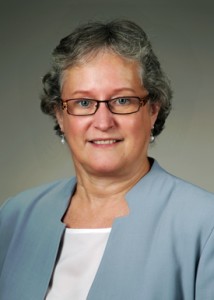
Vicky Whittemore lead the fight within NINDS to give ME/CFS a more prominent place. She has participated heavily in non-profit organizations
Vicky Whittemore took over Program Director responsibilities for ME/CFS at NINDS in 2011. She is also in charge the Synapses, Channels and Neural Circuits Cluster at NINDS. She has had a strong focus on epilepsy. I asked her how she got involved in chronic fatigue syndrome.
When I joined the staff of NINDS in 2011, I was asked to take over the ME/CFS grant portfolio from a Program Director who was retiring. Since then, I have learned a lot about ME/CFS and in addition, I have a family member who has fibromyalgia, so I had done some reading about FM and ME/CFS and had an understanding of the diseases and the concerns of the individuals affected by these diseases.
She brings a bit more to the table than other NIH researchers. She’s worked with numerous non-profit organizations (Tuberous Sclerosis Alliance, Genetic Alliance, Citizens United for Research in Epilepsy (CURE), and the National Coalition for Health Professional Education in Genetics (NCHPEG)) in addition to her work at NINDS. Dr. Whittemore appears to have filled just about every significant position (member, Chairman of Board of Directors, vice president and medical director) at the National Tuberous Sclerosis Association.
Linda Tannenbaum has described Vicky Whittemore as a real partner who is very dedicated to supporting ME/CFS at the NIH.
A Foot in the Door
This is a foot in the door. It’s a good start. Aside from the Clinical Center study no dollars have been committed yet but the NIH announcement comes loaded with promises. There is still an achingly long way to go (RFA, Centers of Excellence, more education funding) but we have a chance now. We didn’t before.
Reactions from several leaders were positive.
Dennis Mangan, former NIH official and head of the Trans NIH Working Group presented the “move” as a positive step and acknowledged work remains to be done.
“The fact that CFS has a “home” (even if that only means a coordination center) is good news. It appears that the Working Group will receive even more attention especially at NINDS (NIAID, NINR, and the clinical center.) CFS needs to have an institute with funding authority to put out RFA’s etc. Having NINDS, which has such authority, coordinate additional funding might facilitate such releases. I am particularly impressed that the clinical center will be setting up advanced evaluations of patients with fatigue. ”
“I think it is important for the entire CFS community to congratulate themselves on this NIH announcement. The patients and investigators have kept the NIH informed and concerned about this illness. Now, it is equally important to keep the pressure on NIH to use this increased awareness to get more research funding.”
Carol Head lead the powerful Solve ME/CFS Initiative briefing earlier this year and met several times with NIH officials. She said
“This is a landmark day for the millions of patients suffering with this dreadful disease and a giant step forward in our drive to make ME/CFS understood, diagnosable and treatable”
A renowned geneticist, Ron Davis leads the Open Medicine Foundation’s Severely ILL Big Data Study. His son Whitney is severely ill. He too presented it a good first step and looked forward to more:
I’m very excited about NIH taking its first step in launching a comprehensive molecular investigation of this devastating disease ME/CFS. I understand it was logistically easier to set up an intramural program at this time, but I look forward to their launching the next step, which will recruit the best researchers throughout the country. I anticipate this will be a major cooperation between the scientific extramural community and NIH’s intramural program. I hope this next step will be quickly executed and involve serious money and less talk!
Davis is under no illusions about the NIH funding environment but believes Collins will do what it takes:
“I’m optimistic. I think Francis will do a good job. He knows what he has to do. It’s just very hard to do it.”
Ian Lipkin has been around the barn the few times at the NIH. He had a similar take on the announcement: it’s all good – and show me the money!
“Is it good news for us? Potentially yes…. The function is the budget. [But] it means it’s moved toward the front of the stove.”
Suzanne Vernon believes efforts are finally starting to pay off.
A handful of researchers and doctors, like my colleague Dr. Bateman, have worked tirelessly to make change happen; champions that at times have worked at great personal sacrifice to forge a better way for our ME/CFS patient community. I believe it is all beginning to pay off. The wheels of change move far too slowly on a federal level, but they are moving.
Robert Miller has been ill and advocating for ME/CFS for decades. When Bob is in DC federal officials always get a visit. Welcoming the move out of “Siberia” he and Courtney Miller stated
“We embrace these changes, and are encouraged that the Director’s Office has led a new direction for ME/CFS research. We look forward to working together with patients, experts, and the NIH on follow-up, to make the most of these changes and successfully expand research that will lead to diagnosis, treatments and ultimately a cure. It has been a long time coming, and we have a lot of catching up to do in the science of our disease. More details and increased funding will need to be forthcoming to fulfill the potential of these changes, but this announcement is a promising set of steps necessary for a strong federal research program.”
A New Beginning
It’s a new beginning for ME/CFS. Beginning’s are rarely easy. Real breakthroughs often take a lot of effort in the beginning – effort that doesn’t always seem to be producing many results. Such have been the advocacy efforts over the years. Carving out a new place for ME/CFS at the NIH – an institution that has not welcomed this disease for many years – undoubtedly took quite a bit of effort on the parts of those involved.
Thanks, then to Francis Collins for his promises, to Walter Koroshetz for leading the Working Group and to Vicky Whittemore for fighting for NINDS to take a leading role.
Thanks to Vivian Pinn at the ORWH for giving us a home when we were homeless, and thanks to two ORWH members, Nancy Lee and Susan Maier, both of whom have taken quite a bit of flack over the years. They set the stage by producing – against the communities wishes – the two most consequential reports in ME/CFS’s history. (The ORWH will continue to be involved in ME/CFS).
The IOM report, in turn, had it’s genesis in the decision at CFSAC to prioritize its recommendations – a decision that was not made without controversy.
Many Questions
Now, it is equally important to keep the pressure on NIH to use this increased awareness to get more research funding.” Dennis Mangan
Francis Collins has given us some promises and we are left with some big questions. What is a “significant” increase in funding. When will it occur? What about an RFA? If the NIH is really serious about jumpstarting this field and bringing in new investigators, an RFA is the quickest and most effective way of doing that. If an RFA is not possible now, when is it possible? If we can’t get an RFA done at some point – we got one done in 2006 without the director of the NIH involved – what does that say about this effort?
What about a research definition – possibly the most important research item on the agenda. Has a single successful disease research effort occurred without one? What about validated outcome measures? Both the P2P and IOM reports cited the need for those. The P2P report recommended that a network of Centers produce those. What about Centers of Excellence?
What kind of strategic plan will the Working Group produce? Which “decision-makers” will come on board? In particular, who will the NIAID – a key Institute – appoint to the Working Group?
Upping Our Game
This field is bursting at seams with needs. The NIH is upping their game and we need to up ours as well. We’re asking the NIH to produce a strategic plan to conquer ME/CFS without having one ourselves to ensure that they will do so. Our advocacy has increased dramatically but it continues to be disorganized and less effective than it could be.
Think on this…The IOM and P2P reports came from within the NIH – not from ME/CFS advocates – and once they were initiated the ME/CFS community mostly fought them tooth and nail. A smart advocacy movement would have understood that reports like this were necessary to build the standing we needed within the NIH to move forward and would have pushed for them years ago. We could have been having this conversation five or ten years ago.
What other opportunities are we missing?
Consider also that impact of the IOM and P2P reports has been made. We won’t see the likes of them for quite some time. It’s up to us as a community now to ensure that the NIH continues to move forward. It’s time to ramp up our act as well.
Take the poll and tell us what you think about the NIH’s moves.









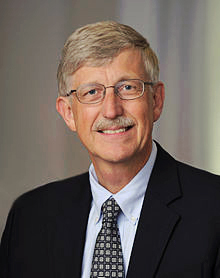
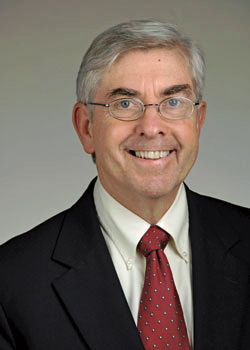
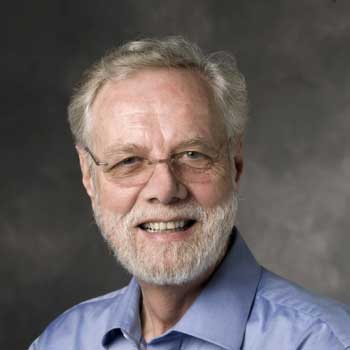
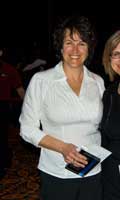



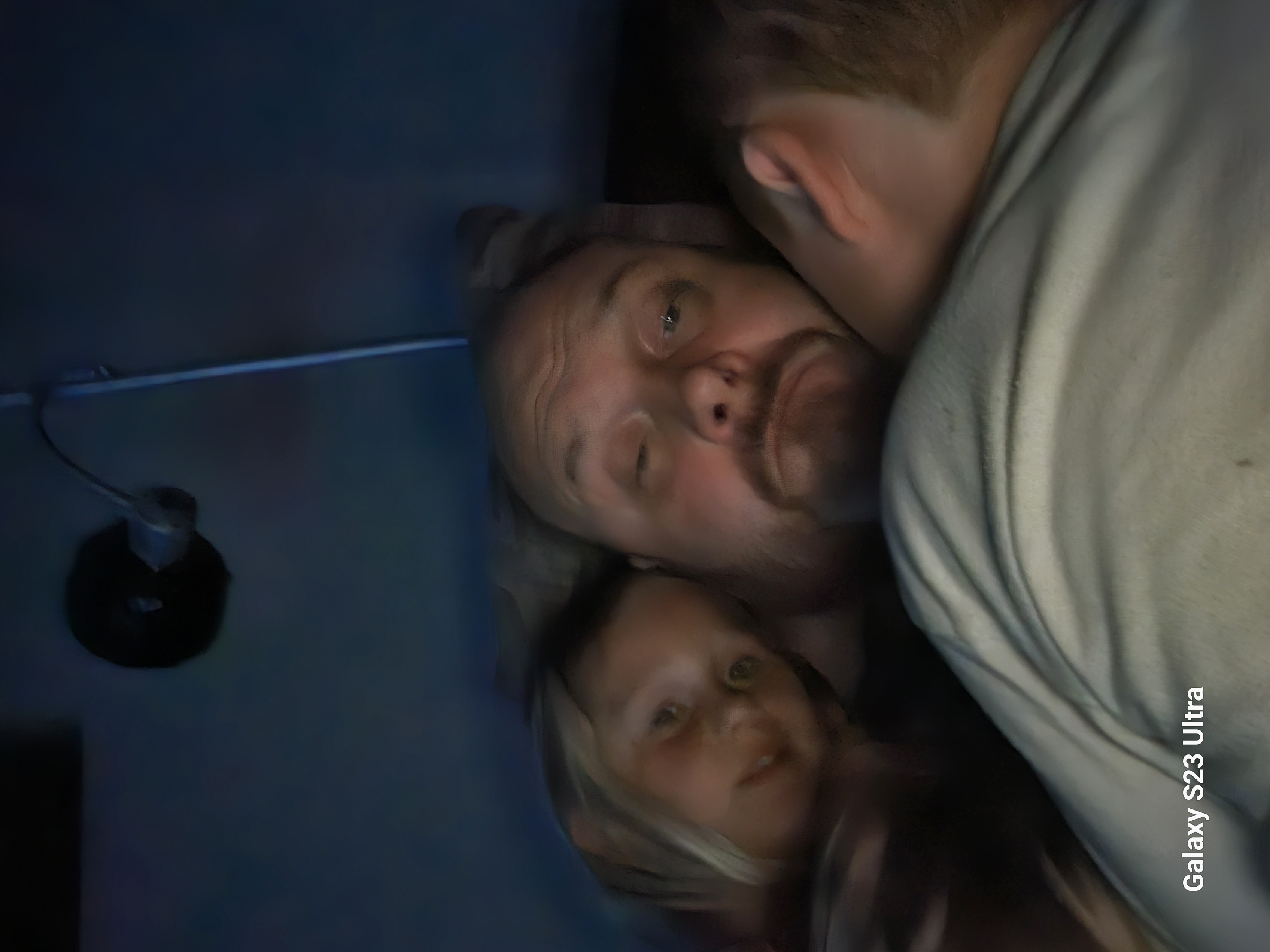


Excellent article, Cort. In the context of advocacy – and the need to get rid of bad stuff as well as to get good stuff – I hope you won’t mind me mentioning (again!) the hugely successful, record-smashing #MEAction petition calling for the retraction of misleading claims of improvement and recovery in CFS patients in the PACE trial.
PACE has been a monkey on our backs for years and is a key reason why ME/CFS is viewed by many as maintained entirely by deconditioned patients’ fear of exercise.
The petition has gained a whopping 8,500 signatures in only nine days! And its target is 10,000.
We’re so nearly there – please sign and send the petition to everyone you know.
And if you’re part of an organisation, please do everything you can to get the petition out via your platforms.
Here’s the link:
http://my.meaction.net/petitions/pace-trial-needs-review-now
Let’s sink this piece of appalling science!
No problem Sasha – let’s get to 10,000 🙂
Thanks, Cort. I never thought I’d live to see the day when our community would have a petition pushing 10,000 in only nine days!
It’s just phenomenal, and we can trust Jen Brea and #MEAction to leverage it.
Sign and pass it on, everybody!
http://my.meaction.net/petitions/pace-trial-needs-review-now
Cort, you wrote:
“We’re apparently at a not so great time in the funding cycle. Collins has said he’s going to try and wheedle some funds out for ME/CFS for 2016 but it doesn’t sound like it will be easy. Whittemore pointed out that NIH funding has been flat for over ten years. One assessment suggests the situation is actually much worse; it states that in real terms NIH funding has dropped a staggering 22% since 2003. ”
This logic – whether from the NIH or from patients, and I hear it a lot – that we shouldn’t expect an increase in funding if NIH funding overall is flat or getting cut, just makes no sense at all.
What we should get is our fair share, no matter how small the pie. If we got our fair share according to our numbers and our disease burden, our funding would skyrocket and everybody else’s would go down a tiny, tiny bit.
I wish someone would finally put fairness first and do the right thing.
Hopefully these are the first steps to doing that. As I noted diseases can get substantial increases in funding even in poor funding environments. I wonder if Collin’s apparently pretty intense sense of Christianity has lead him to feel morally obligated in a way that others, obviously, have not. He’s apparently been very convincing one on one that he’s serious about this.
Time will tell.. If the NIH went by disease burden – we would be doing quite well. How they manage to ignore that is another question entirely.
Exactly! An analogy would be discovering a in a land where $10 an hour is the norm, a group of workers is only making 25 cents an hour is told they are getting a 400% wage increase isn’t that great!
But they are still living in poverty making 1 dollar an hour because they were neglected from the start. Maybe in 30 years they will catch up as the economy grows.
Not that this isn’t good news and it’s always good to say thank you when someone is trying to help but never forget what is right and just and the real goal of funding equality so that there is not another lost generation and billions in economic burden.
I like the two pronged activism where some play the inside game, but until there is equality there is also an angry vocal arm of the movement fighting for full equality. Remember that Malcom X made MLK Jr seem less radical and thus someone to work with. They both knew they needed each other even if it looked from the outside that they were at cross purposes.
Thank you so very much for this detailed report Cort!
It will take me more than a few passes to understand it all, but absorbing this information will well worth it.
Hope you are taking a breather now. You must need it!
Yes, I do and I am 🙂 🙂
I don’t know how you manage to do it time after time, but thank you so much for providing this excellent detailed report Cort. It feels good to find myself encouraged by the current changes and positive movement at NIH. I was seriously doubting if, after 30 years of being ill, I could dare to believe a treatment and cure would happen in my lifetime. I now believe it actually might!
Thanks, Cort, great analysis. Like others, I need more time to go through and really sit with some of this stuff before jumping into the discussion. Like Sasha, I have no doubt that NIH is capable of dedicating SIGNIFICANT more funding to our disease. Having worked in US Government strategic planning and budgeting for YEARS, I can tell you that budget reallocations happen all the time, all the time, especially for political priorities. Anyway, I think your post here would be a great topic of discussion for the MEAction working group on NIH, which I strongly urge you to join if you haven’t already. Thanks again for your work on this.
Great, exhaustive article, we can only hope the promises are kept! Hopefully Davis can get enough private funding that both studies can be done, two guns are better than one!
Thanks for the article Cort.
There seems to be a lot of talk, but not much action.
While advocates speak of research funding increases, that is only going to happen if there is a movement to increase research capacity.
The NIH saying, oh we have a working group is nice, but it is not action. We all know how committees can be.
Where is the (funded) centre for excellence? A place that young grad students who are interested in ME & CFS can go do to research?
Where is the study of reasons why ME & CFS are neglected in the research community and a comprehensive plan to change the perception and eliminate the barriers to research?
The key is to increase now NIH funding since that can “float all boats” & ME/CFS is finally out of drydock. H.R.6 – 21st Century Cures Act is passed, to increase NIH funding so all need to support their senators to approve Senate bill to increase NIH funding $2B per year. Also, as Hepatitis C, CLL, HIV get cured or treated, should free up money to cure neglected diseases like M.E. Please help Francis Collins: be sure you senators approve NIH increase and make doubling NIH funding over 5 years and key platform for both parties for upcoming elections. Since NIH can be slow, need to support Ron Davis/OMF in the meantime since they already have a plan and motivation to Cure M.E.
I find myself unable to participate in the poll, for lack of options.
No research money at all should go to ME/CFS. It’s a dead end. ME (G93.3) is not CFS (R53.82).
Don’t let anyone tell you “the funding cycle” or such are serious constraints. NIH has plenty of reserve funds tucked away in their accounts that could yield $250 million cash tomorrow for spending on ME/”cfs” if the will were there. Other parts of DHHS, Pentagon, State and other departments also have healthcare capabilities.
Remember, the FY 2016 budget congress just finished wrangling over is in part for spending that has already been done.
Accounting spending and cash spending are two entirely different things. Government accounting and real world spending are two entirely different things.
Good points.
thank you very much, cort! i always appreciate the energy that you are able to put into our advocacy and informing us of what is going on.
-dee
Thanks Dee – figuring out why we have had so much trouble and just what the heck is going on over there is a fascinating subject to me…
Cort, this is a side note…Stopping by Woods on a Snowy Evening is one of my favorite poems. My copy of the Susan Jeffers illustrated version comes out at Christmastime each year. I have always found it so peaceful. He obviously has a lot of work to do, but he takes time for this respite before he continues with his work. I bought this book for Christmas the year I became ill, 2008. I had no idea that I would go on to be ill for so many years, but I knew I loved this book and maybe you have made the connection for me… And God is not done with me yet either.
-Tina
It’s great to hear there is renewed interest in funding. Call me a cynic( or maybe realist) but even if there is more funding will it go to the right place? We don’t need more junk studies on things like cognitive behavioral therapy negligently wasting funding. We need things like hypothalamus axis, brain irregularities, adrenal function, and the relationship to diet studied as the make sense and show some promise in finding a root cause and/or bio marker.